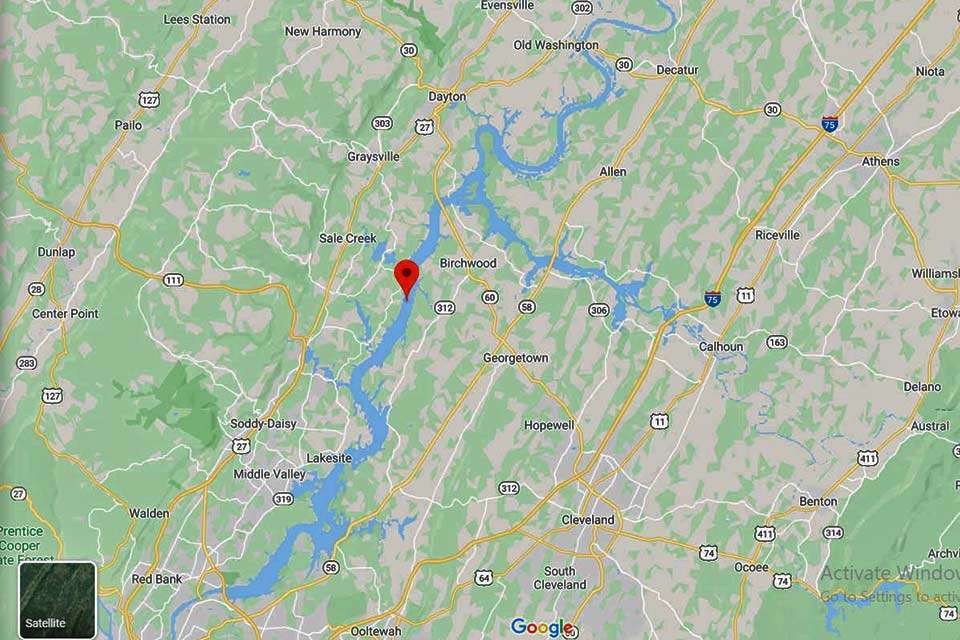
Chicken Mama? Slick-n-foggy? What was that name?
Doubtful anyone who can explain a baitcaster’s gear ratio has not heard of Chickamauga Lake. In fact this stellar fishery, often simplified to “Chick” finds its popularity on a definite upswing, as steady boat traffic attests. Still, it’s a mouthful.
The lake’s named for a Native American tribe that splintered from the Cherokee Nation in the 1700s and lived along North Chickamauga Creek, which joins the Tennessee River just below Chickamauga Dam.
The name Chickamauga means “dwelling place by the water” — an appropriate metaphor to the task of 85 anglers seeking to unlock a big bass treasure chest in the Guaranteed Rate Bassmaster Elite at Chickamauga Lake.
LAKE PROFILE
This east Tennessee reservoir was impounded by the third in a string of nine Tennessee River lock and dam projects, most of which were created by the Tennessee Valley Authority between 1933 and 1944. Beginning at the confluence of the Holston and French Broad rivers near Knoxville, Tenn., the river stair steps its way 652 miles to Paducah, Ky. where it enters the Ohio River.
Supporting the TVA’s threefold mission of flood control, navigation and power generation, Lake Chickamauga was completed in 1940. Stretching approximately 59 miles from Watts Bar Dam, to its namesake dam, Lake Chickamauga covers 36,240 surface acres with a maximum depth of 72 feet.
Standing 129 feet high, Chickamauga Dam stretches 5,800 feet across the Tennessee River. With four generating units, the dam has a net dependable capacity of 119 megawatts (the amount of power a hydroelectric dam can produce on an average day, minus the electricity used by the dam itself.)
There’s no overstating the impact of a TVA dam’s power supply, but, Chattanooga owes much of its modern stability to the Chickamauga Dam. According to the TVA, the city is the valley’s most flood prone because of its position just upstream of the narrow gorge where the Tennessee River cuts through the Cumberland Mountains.
Prior to the TVA, whenever high river flow would reach the bottleneck, the water would slow and to back up. This caused biannual flooding with an economic impact of about $1.7 million a year (equivalent to over $31 million in today’s economy). Thanks to Chickamauga’s water-storage capacity, the risk of such economic damage and mosquito-borne health crises are all but gone.
A few stats from the TVA:
- With 784 miles of shoreline, Chickamauga has a flood-storage capacity of 345,300 acre-feet.
- In order to maintain the water depth required for navigation, the minimum winter elevation for Chickamauga Reservoir is 675 feet. The typical summer operating range is between 681.5 and 682.5 feet.
- The 60 by 360-foot lock at Chickamauga lifts and lowers vessels about 50 feet between Nickajack and Chickamauga.
- Chickamauga and other reservoirs on the Tennessee and its tributaries have prevented nearly $5 billion in flood damage in the city of Chattanooga alone.
Worth a mention: a similar name, Chicamacomico, appears in two East Coast locations — the village of Rodanthe on North Carolina’s Outer Banks and the Chicamacomico River near Dorchester, Maryland. No doubt, both are charming areas, but don’t mix up your directions or you’ll end up a long way from one of the nation’s top bass fisheries.

